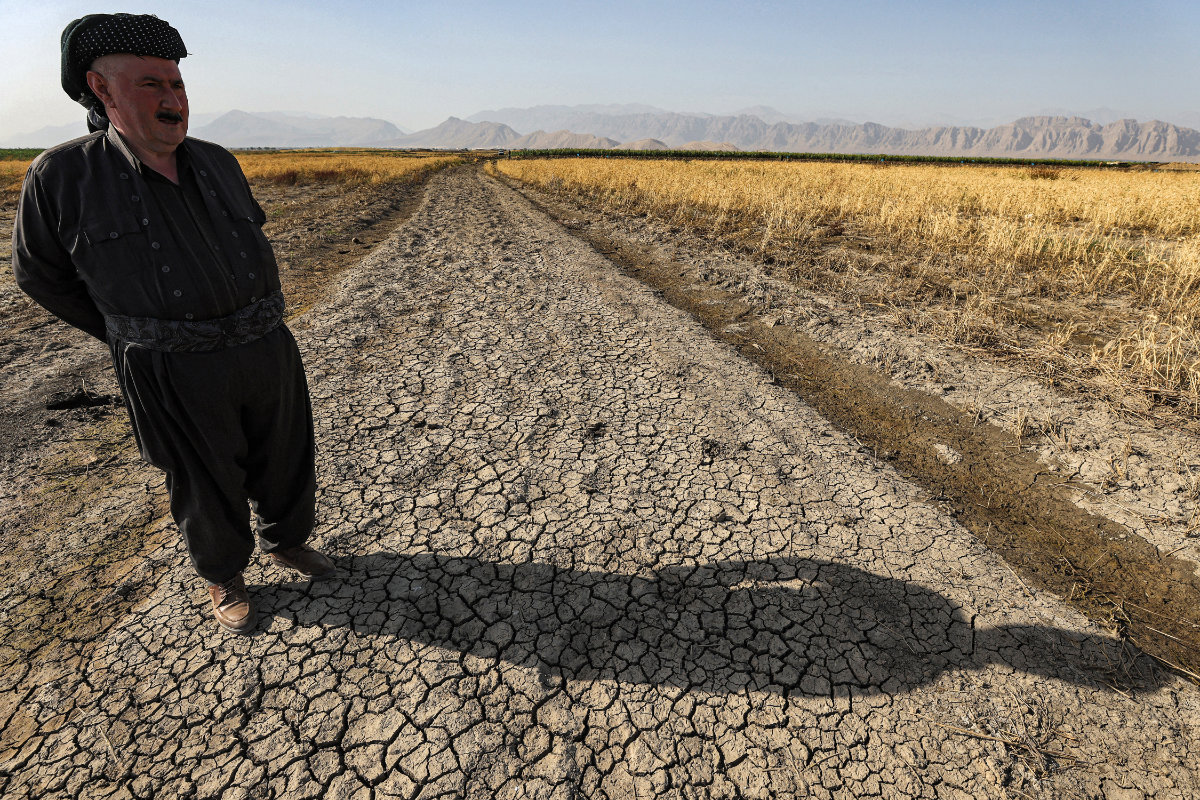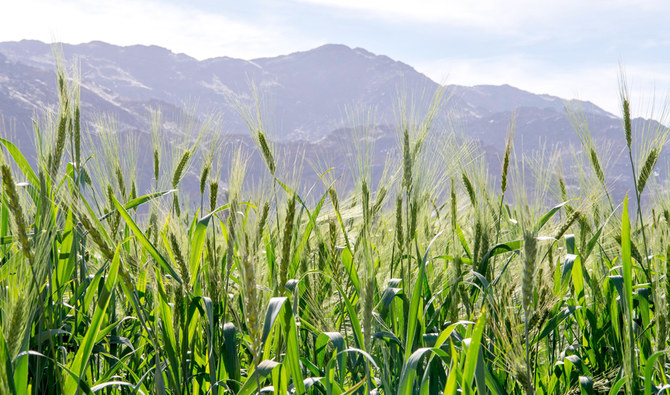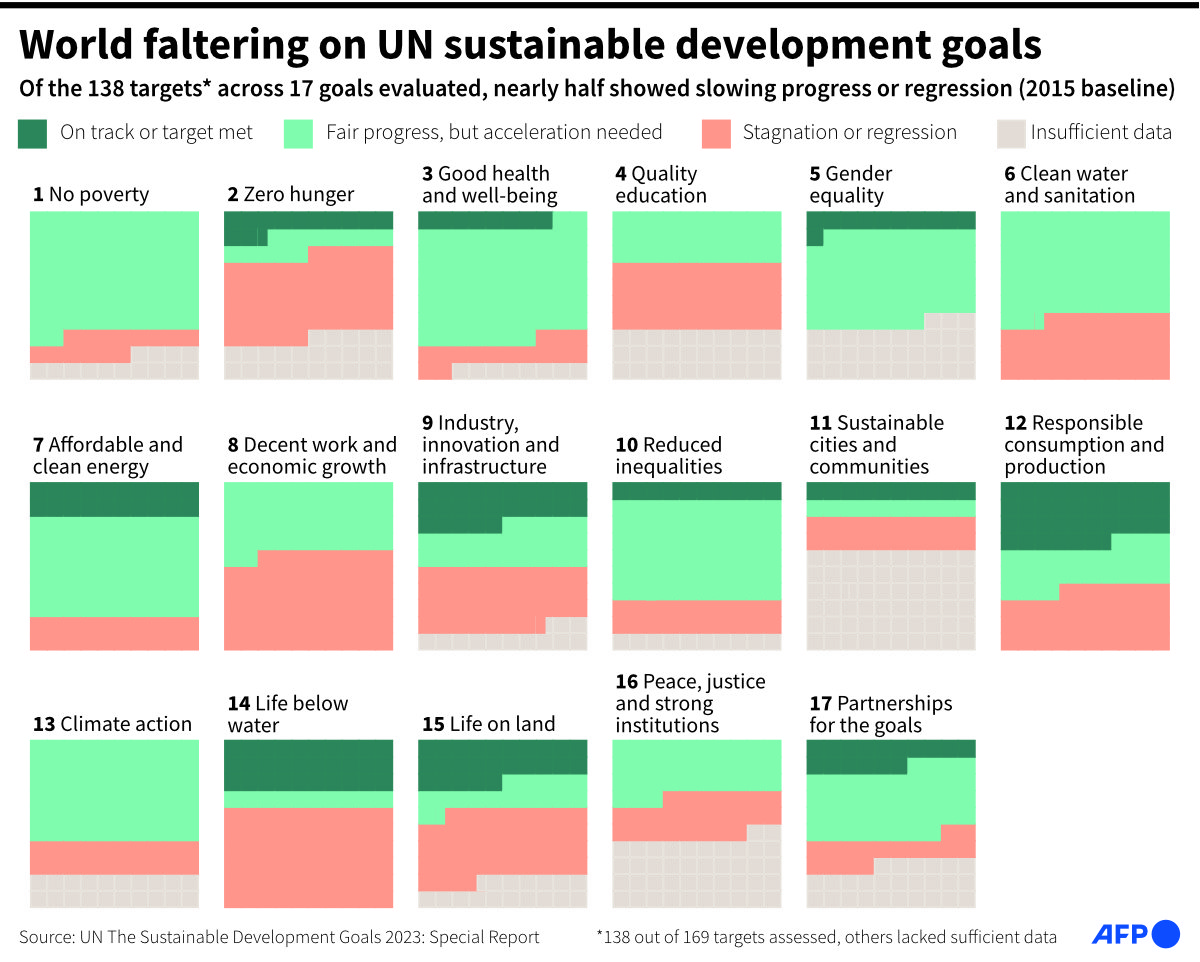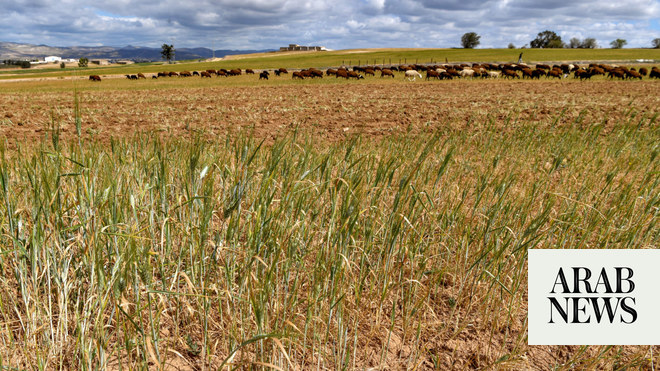RIYADH: Global food shortages are worse than previously thought, concludes the State of Food Security and Nutrition in the World 2024 report released this week by a coalition of United Nations agencies, which found efforts to tackle malnutrition were failing badly.
As countries around the world fall short of achieving the United Nations' second Sustainable Development Goal to end hunger by 2030, the report says climate change is increasingly recognised as a key factor worsening hunger and malnutrition.

As a major food importer, the Middle East and North Africa region is considered particularly vulnerable to crop failures due to climatic conditions in source countries and to the imposition of trade protectionist tariffs and subsequent commodity price volatility.
“Climate change is a driver of food insecurity in the Middle East, and both global and local crises are important,” David Laborde, director of the Food and Agriculture Organization’s Agricultural Economics and Policy Division, told Arab News.
“Now, especially for the Middle East, I think the global perspective is important because the Middle East imports a lot of food. Even if you don’t have extreme weather in your country, if you don’t have droughts or floods in your country, whether it’s in Pakistan, India or Canada, the Middle East is going to be affected.”
This section contains relevant reference points placed in the (Comments) field.
The World Food and Nutrition Status Report has been compiled annually since 1999 by the FAO, the International Fund for Agricultural Development, the United Nations Children's Fund, the World Food Programme and the World Health Organization to monitor global progress towards ending hunger.
At a recent seminar at United Nations headquarters in New York, the report's authors stressed the urgent need to address the lack of funding to help countries facing severe hunger and malnutrition, exacerbated by climate change.
In addition to climate change, the report found that factors such as conflict and economic downturns are becoming more frequent and severe, impacting the ability to afford healthy food, unhealthy food environments and inequality.

Food shortages and malnutrition are exacerbated by the continued rise in food prices, which are affecting economic progress across the world.
“There is another indirect effect that we should not ignore: how climate change affects conflict,” Labrade said.
In North Africa, for example, negative climate change could lead to more conflict. “It could be because people start competing for natural resources, access to water, or just because you might have some people in your area who have nothing to do,” he says.
“Without work, they can’t work on their farms, so they can join rebel groups or other groups.”
You doknow?
By 2023, 757 million people will experience hunger, equivalent to 1 in 11 people worldwide and 1 in 5 people in Africa.
The global food shortage situation has remained unchanged for three consecutive years, despite progress in Latin America.
Globally, the incidence of stunting and wasting in children under five has improved somewhat.
In late 2021, the G20 countries announced that they would allocate $100 billion of unused Special Drawing Rights held in high-income central banks to middle- and low-income countries.
However, since then, the pledged amount has fallen by $13 billion, with the worst-off economies receiving less than 1 percent.

Saudi Arabia is among the countries that have exceeded its 20 percent commitment, along with Australia, Canada, China, France and Japan, while others have failed to meet the 10 percent mark or have stopped cooperating altogether.
“Saudi Arabia is a very large state in the Middle East, so what they do is important, but they also have financial capabilities that other countries don’t have,” Laborde said.
“It can be done through their SDR fund, or it can be done through their sovereign fund, because where you invest matters and how you invest matters in making the world more sustainable. So I would say yes, focusing on investing in low- and middle-income countries in programs related to food and nutrition security could be important.”

Although malnutrition rates in Saudi Arabia have fallen in recent years, the report shows that child stunting rates have increased by 1.4 percent over the past decade.
In addition, the rates of childhood overweight, obesity and anemia in women are also increasing with the continuous increase in the population. In this regard, it is not only the lack of food, but also the lack of healthy eating habits.
“Saudi Arabia is a good example where I would say that hunger and malnutrition are becoming less and less of a problem today, but other forms of malnutrition are becoming more important,” Laborde said.

By 2023, an estimated 2.33 billion people worldwide will face moderate or severe food shortages, and one in 11 people will experience hunger, exacerbated by factors such as economic downturn and climate change.
Affordability of healthy food is a major issue, particularly in low-income countries, where more than 71 percent of the population cannot afford nutritious enough food.
In a country like Saudi Arabia, where overeating is a growing problem, Labrade suggests that appropriate investments in nutrition and health education, as well as policy adjustments, could be the way forward.
While the Kingdom of Saudi Arabia continues to provide assistance to countries in crisis, such as Palestine, Sudan and Yemen through the humanitarian agency KSrelief, these states continue to face dire situations, particularly Gaza, which has been hit hard by the war with Israel.

“Even before the conflict started, especially towards the end of last year, the situation in Palestine was already complex in terms of agricultural systems (and) population density, there were already problems with malnutrition,” Laborde said.
“Now, what's happening everywhere, whether it's in Sudan, Yemen or Palestine, when you start escalating conflict and military action, the population is impacted dramatically because you can destroy crops, you can destroy access to water, but then people can't go to the grocery store when the trucks or the boats that are bringing food are stopped.”
Although Palestine and Sudan are extreme cases, an estimated 733 million people worldwide are still facing hunger, a persistently high level observed over the past three years.

“We work with the World Food Programme and other organizations on the ground to bring food to people in need in Palestine,” Labrodet said of FAO’s work. “Before and after conflict, we work to rebuild things that need to be rebuilt. But without peace, we have limited what we can do.”
FAO helps food-starved countries by introducing better seeds, animals, technologies and irrigation solutions to improve production systems, while also working to protect livestock from pests and diseases by providing veterinary services and incentivizing countries to adopt better policies.
The report projects that by 2030, an estimated 582 million people will still suffer from chronic undernourishment, half of whom will be in Africa. This figure reflects levels observed in 2015, when the Sustainable Development Goals were adopted, indicating that levels were holding steady.

The report highlights the need to build better funding systems in line with this year’s theme: “Financializing to End Hunger, Food Insecurity and All Forms of Malnutrition.”
“In 2022, there were a lot of headlines about global hunger, but today, that issue has almost disappeared, with the number of hungry people and the number of people still going,” Labrodet said, referring to the negative impact of the war in Ukraine on global food prices.
“We have to say that we are not living up to the promises that policymakers made. The world is producing enough food today, so the most important thing is how do we distribute food, how do we get access to food? This is a man-made problem, so it should be a man-made solution.”

